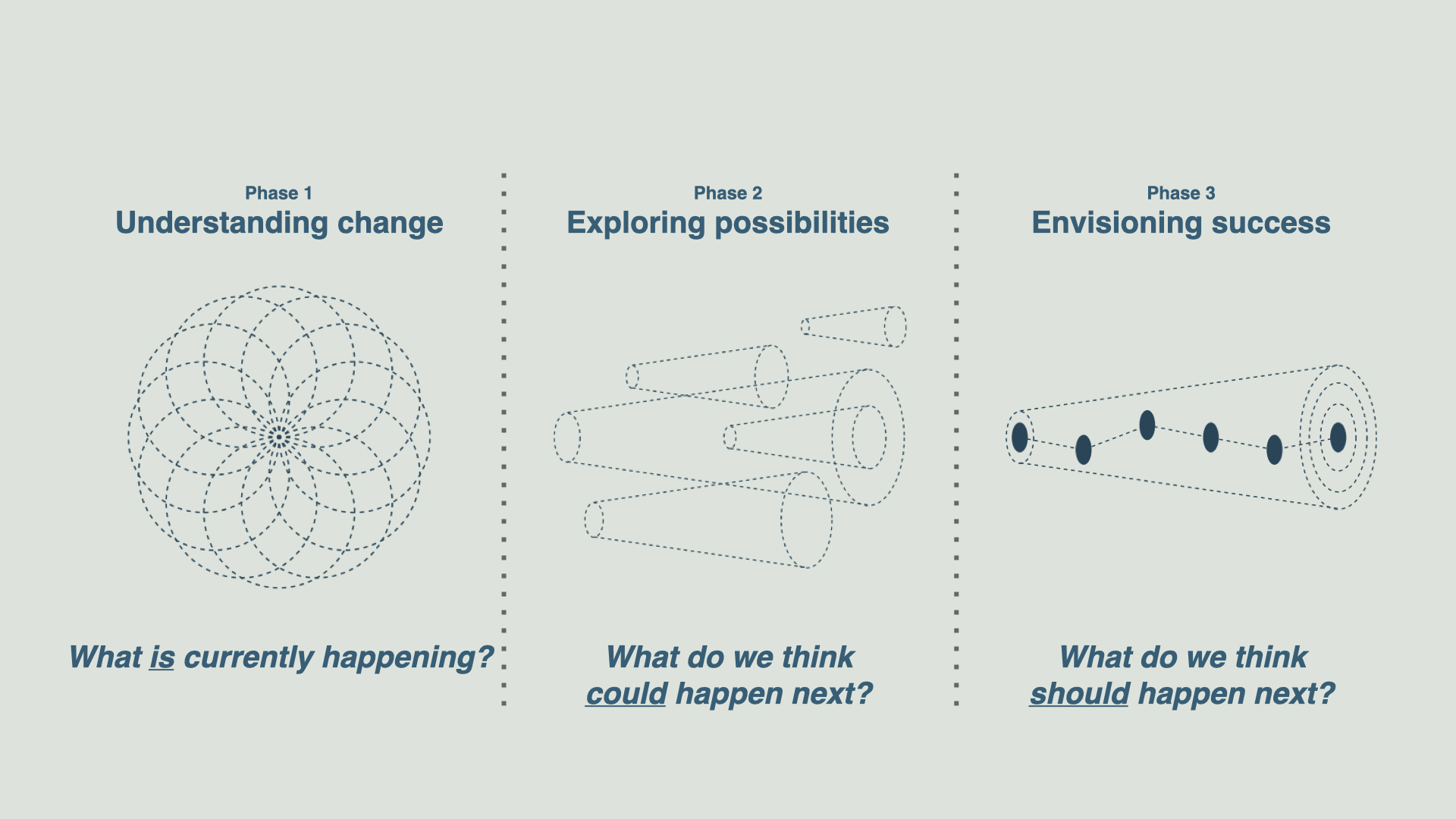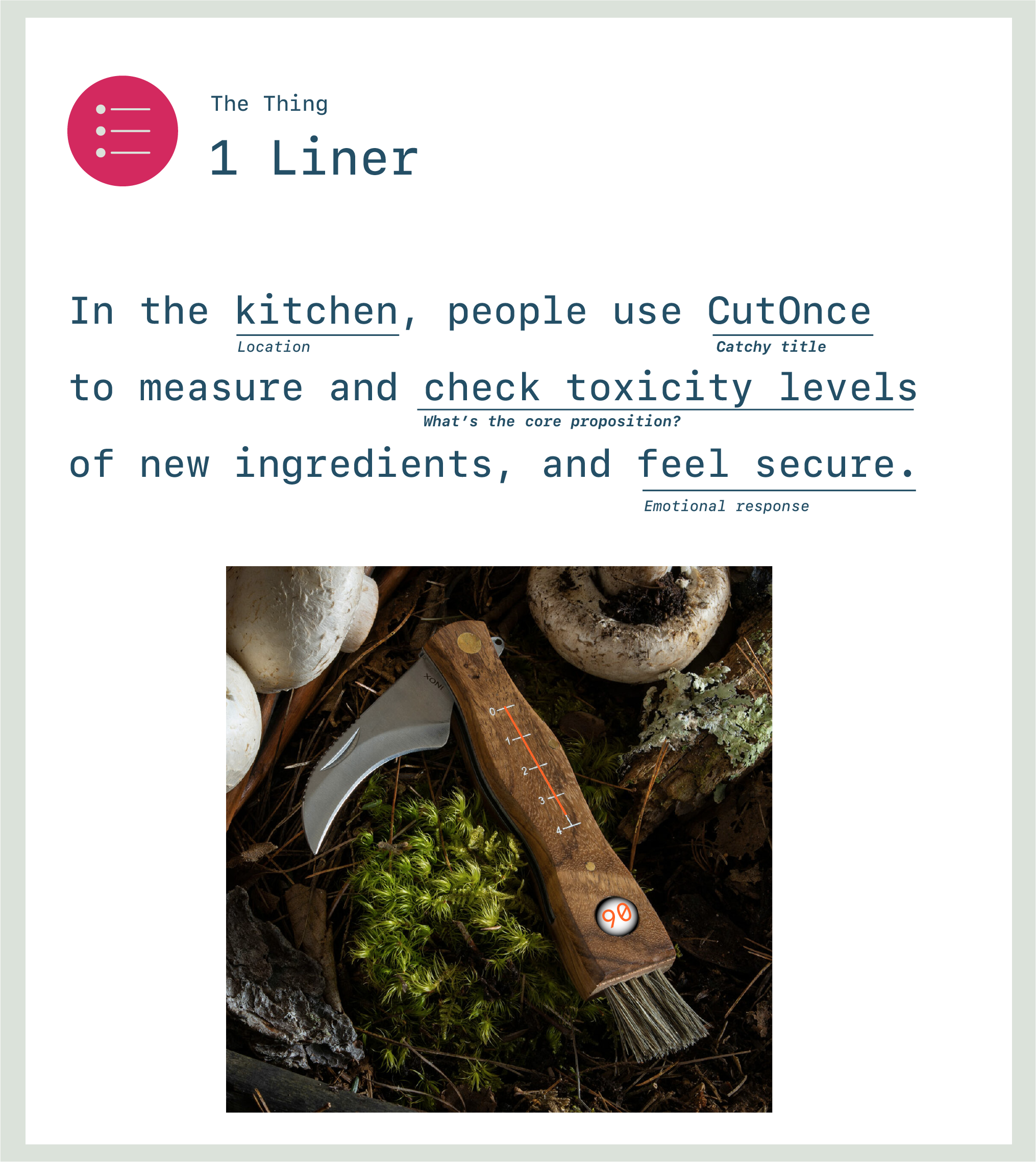Futurescaping Climate
How exactly does speculative design and futurescaping work? How does one design for the future or about the future? Together with Filippo Cuttica, we created a workshop to share futurescaping methods with a wider public, focusing especially on speculative design. While there are many strategies to engage in speculative design, in our approach, we divided the speculative design process up into 3 main phases. Within each phase, we shared the specific methods and tools that we find useful.
As hands-on learning is always better than sitting back and listening, we identified climate migration as our anchoring topic and led our participants through the different phases of the speculative design process.

Diagram by Filippo Cuttica
The first phase is about understanding change. After researching different trends and patterns, we find a focus within the many changes around the world - climate migration. To understand it more deeply, we search further for signals of this change. Here we can use the STEEP analysis (standing for Social, Technological, Economic, Environmental and Political) to flesh out the research as we seek to uncover a broader context for our future scenarios.
In the case of climate migration, we identified and presented the main drivers for that trend - from water scarcity to extreme heat - as well as the numbers behind the trend. For example, by 2050, climate change could lead to more than 216 million people internally migrating in six regions of the world (source: WE forum). They will migrate from the coasts inland or from the South to the North. This is just one of many statistics and stories that we read as we immersed ourselves in the topic.
We then shift to searching for signals of this change, seeking diverse signals from different cultures, different species. In our case, we collected stories of how animals, fish and plants are migrating due to climate change, and how that changes predatory-prey relations as well as life cycle food chains. We also look at seasteading (a technological signal), at impact on intangible cultural heritage (social), at urchinomics (an economic, environmental and social signal) - and many more.
From this research intensive first phase, we move to the second phase: exploring possibilities. Here we use scenarios to bring that part of the future to life, future wheels to anticipate consequences and provocatypes to dive in and feel the possible future. Regardless of the tool, it’s best to start with a few scenarios that collect the focus and the signals so that we can imagine possible future outcomes from there.
In our case, we wrote 4 scenes that depict different corners of our future with climate migration. And then we distilled our scenarios from those longer scenes. Each scenario has time, a climate event, a location, a signal, an actor, an emotion and an issue. They are written to provoke ideas of the needs of that future, and the new services that might fill those needs. Take a look at our scenario “Prep Kit” and others:




Our participants divided into 4 groups, taking 1 scenario card per group. The next step was to flesh out the needs (outlined in the scenario “meta-data”), the new products or services that might be required to live in that future scenario. This step of envisioning tangible objects and services brings the future to our present desk and doorstep in no time. We came up with the initial ideas for the products (as time was short), but it was up to our participants to dive in and define them more fully.




Once the participants had continued to detail out the product or service that would be needed, they used a futures wheel to work through the possible impacts of that new product in that future scenario. Along the edges of the wheel, we placed prompts to structure their thinking. We asked them to consider the political, economic, social, technological and environmental impacts (PESTLE) to stimulate a wide range of impacts
For example, the group that worked with the product 1Choice wrote about a social impact where “Stoic philosophy and nihilism are more popular that football” among other ideas:

Lastly, from the possible future impacts, participants developed one (or a few) into a possible future news headline, simulating that the future is already here, now. The headline is our light-weight version of a provocatype, which we make in order to manifest the future, to feel what it might be like if it really happened. The group that worked on the Prep kit scenario and 1Choice product made several headlines. This one stood out the most:

As we create these tangible manifestations of the future, we can discuss what is actually desirable, what outcomes we should aim at going forward? The provocatypes don’t necessarily show the shiniest utopic visions. Rather, they are often surprising, strange, yet revealing. From our futurescape (the scenario, the futures wheel, the provocatype), we can try to backcast and figure out how might either avoid the worrying impacts that we projected, or steer towards and nurture the hopeful futures we envisioned.
“We take scientific predictions and “weak signals” to extrapolate imaginative possibilities. These material extrapolations make visible the alternatives open to us; giving people a chance to discuss issues that affect us all.”
Beyond Speculative DesignDate: Fall 2022
Role: Researcher, co-facilitator
Collaborator: Filippo Cuttica
Host: Design Futures Initiative, Costa Rican chapter
